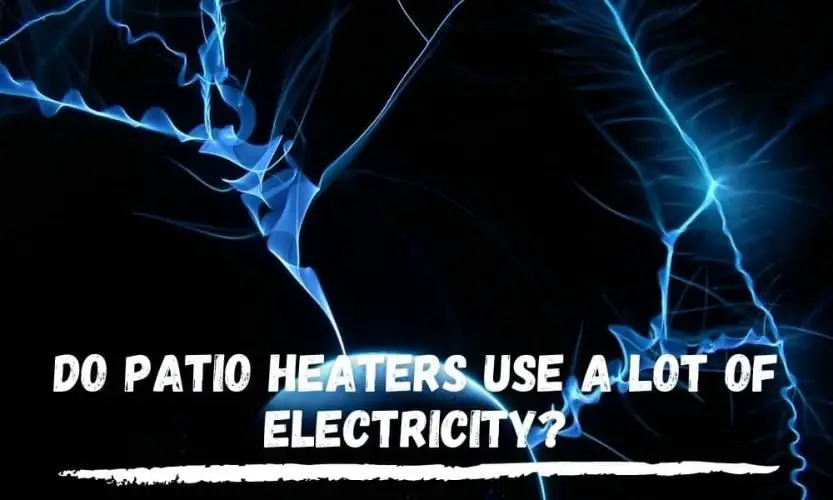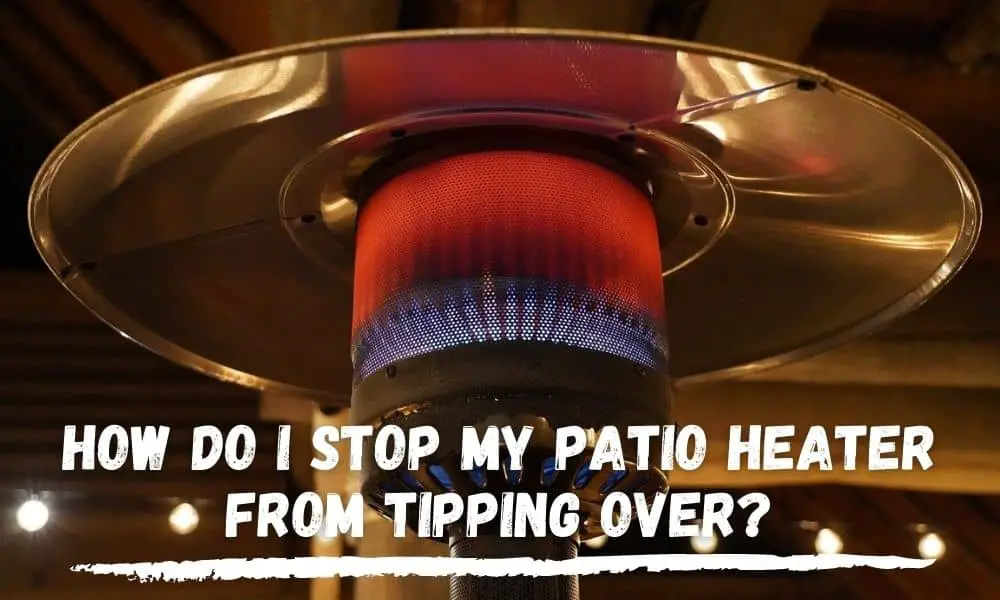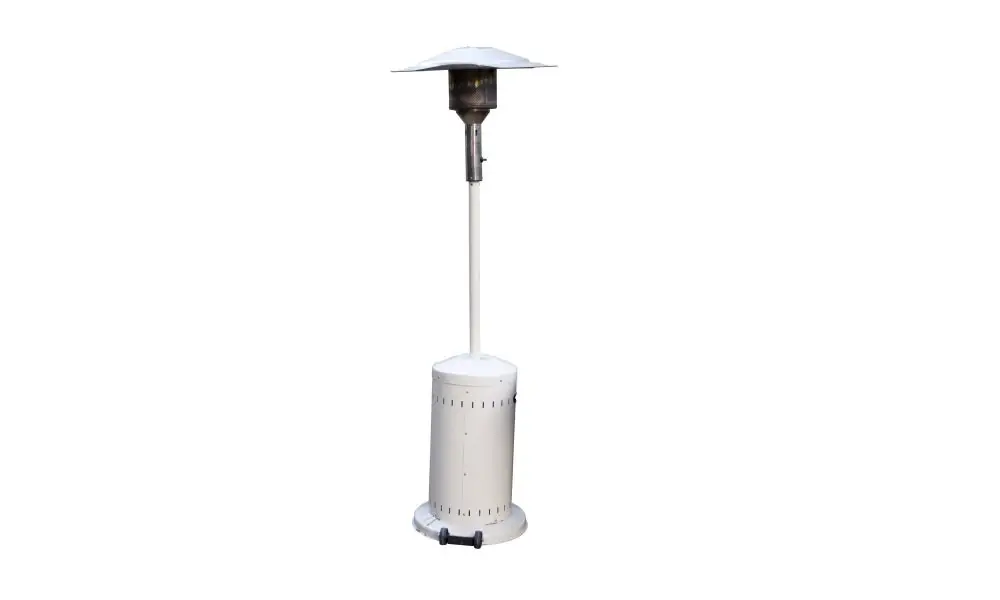Electric patio heaters have unique features you can’t find in other models.
However, they are the least fuel-efficient heaters available. There are numerous FAQs concerning electric heater energy usage that people continuously ask.

We’ll use them to guide you on how to lower your electricity bill while using these heaters.
Quick Navigation
Is It Cheaper to Leave Heating on Low?
Should you leave your patio heater running throughout on low? Should you set it at high and keep turning it on and off? These two questions are some of the most common when it comes to indoor/outdoor heating.
Electric patio heaters left running throughout spend a lot of fuel due to heat loss. The temperature difference between the space you are warming and the outside causes this loss. Thus, your electric patio heater keeps using excess fuel to cater to the continual loss hence more expensive.
Make sure your home is draught-proof. Investing in quality ventilation features in your home will lower your bills eventually.
What Is the Best Electric Patio Heater?
There are many considerations when searching for the best electric patio heater. Before setting for an option, you have to ensure that it has adequate capacity for your warmth needs.
A straightforward way to determine this is by multiplying your space’s square footage with the temperature rise. This helps you determine the heater type in BTU ratings.
Which part of your home do you want to use your patio heater? If it’s an outdoor space, is it a covered area? While indoors and in covered patios, consider wall-mounted models.
However, finding a portable model, preferably with a stand, lowers your energy and purchasing bills. Purchasing an electric patio heater for every room and several places in your covered outdoor patio is expensive. With a portable heater, you’ll take it anywhere in your home.
Are Electric Patio Heaters Better Than Gas?
Whether to go for electric, propane, LPG, or natural gas patio heaters depends on your needs. Therefore, there isn’t a better model conventionally. You can make your decision by looking at the merits and downsides of each.
Merits of Electric Over Natural Gas/liquefied Petroleum Gas/propane Patio Heaters
- They’re typically more portable than propane, LPG, or a natural gas heater. For instance, propane units have heavy propane tanks.
- Electric patio heaters don’t produce carbon dioxide and carbon monoxide. Natural gas, LPG, propane heaters, and gas fire pits have carbon emissions.
- They’re usable anywhere there is electricity and are compatible with an extension cord
- The purchase price is generally lower than a gas model
Tip: Electric patio heaters are excellent for people with children and pets as they lack carbon monoxide emissions.
Merits of Gas Patio Heaters Over Electric Models
- More energy conservative than an electric heater
- Electricity blackouts sometimes take lengthy periods. With a gas model, it takes a short while to replenish your fuel supply.
- More powerful thus idea for expansive areas
- The maintenance price is lower
Tip: Gas models have a BTU rating of even over 100,000. For this reason, they are excellent for business owners, i.e., night club, and hotel business owners.
How Much Electricity Does an Outdoor Heater Use?
Many people use fire pits for outdoor warming because of the high BTUs they generate. Besides, if you want to feel more warmth from fire pits, adding fuel is all you need.
You’ll require 1500-watt outdoor patio heaters and above for the significant warming of outdoor spaces. While using electric outdoor patio heaters, you may spend more money compared to indoor heating. For starters, you’ll need longer extension cords to access the space you want to heat.
Secondly, you’ll require infrared or halogen outdoor patio heaters that rely on radiation. With lesser objects to warm, you’ll need to set outdoor patio heaters a little high.
The walls in indoor spaces help to trap heat within and also absorb some of it. This explains why you’ll need to set outdoor patio heaters relatively high during outdoor use.
What Is the Most Efficient Patio Heater?
Do you want to save the money you spend on energy consumption? Certain features in an outdoor patio heater can minimize energy usage. Outdoor heaters with the timer feature allow you to set the time when your heater will go off. Thus, you can even doze off without worries.
Outdoor heaters with variable heat settings are ideal for energy efficiency. Why would you set your patio heater full-blast when you need a slight temperature change? Outdoor heaters have varying heat levels. With a heater having many heat levels, you’ll have better control over temperature.
The fuel source kind also determines how cost-effective your heater is. Gas patio heaters use less energy than electric patio heaters. Hence, they have better cost-effectiveness. The only catch is that they aren’t excellent for indoor use, especially in a bedroom.
Remember, gas heaters emit carbon monoxide and need ample ventilation. If you sleep in a poorly ventilated bedroom with a gas heater on, you may die.
Wood-burning patio heaters are excellent in fuel usage. If you can overlook the tedious preparations, smoke, and pungent smell, buy one. However, you can’t use these heaters indoors.
The bottom line, electric heaters with timers and numerous heat levels offer a balance between efficiency and flexibility. Check out TrustTech Wall-Mounted Outdoor Heater, with excellent efficiency features.
How Good Are Electric Patio Heaters?
If you want to heat a small or average-sized area, electric heaters are excellent. We’ve already seen the advantages of electric models in comparison to gas heaters.
However, electric models offer less than 15 000 BTUs. Thus, they aren’t ideal for massive business places.
What Plug-in Heaters Are the Cheapest to Run?
Electricity bills are calculated depending on how many units are spent per hour. They use the kilowatts per hour(kWh) system. Here’s how to determine the cost:
- If you have a 1000 watts patio heater, you’ll divide that by 1000 to get 1kW.
- Multiply it by the number of hours you use your patio heater, i.e., 10. This gives you 10kWh.
- Multiply this by the cost per hour applicable in your place, say 0.20 cents. The money you’ll spend on electricity on this day, therefore, is $2.
The patio heating industry has brought about numerous electric heaters that we’ll discuss below in the order of operating costs.
Fan Models
These are cost-effective purchases, but their operation isn’t as efficient. If your room isn’t draft-proof, the hot air getting ejected from them is quickly lost.
So, you may need to keep turning them on frequently to maintain the hot air. However, they have a directional and swift operation. Make sure to shut your doors and windows while using these heaters to lower heat loss.
Oil-Filled Models
These function by electricity passing through the oil. The oil expands, giving off the heat on the heater’s surface. This process leads to low space heating compared to fan models. Since they rely on convection like the fan type, keep your room draught-proof. Otherwise, you’ll spend a lot.
Halogen Models
These have glowing lights and rely on radiation. Hence, they heat you directly without heating the air. Thus, you can leave your windows and doors open as they operate cost-effectively.
Storage Heater
These are bulky and expensive. However, they are relatively cheap to run.
Infrared Panel Models
These also rely on radiation. However, they feature no lights and have a wider dispersal. They aren’t ideal for spaces with many glasses.
Conclusion
Electric heaters rely on a lot of electricity to run. They have more expensive running costs than gas models and much more than wood-burning units.
However, they are more flexible in usage areas, user convenience, and portability.




